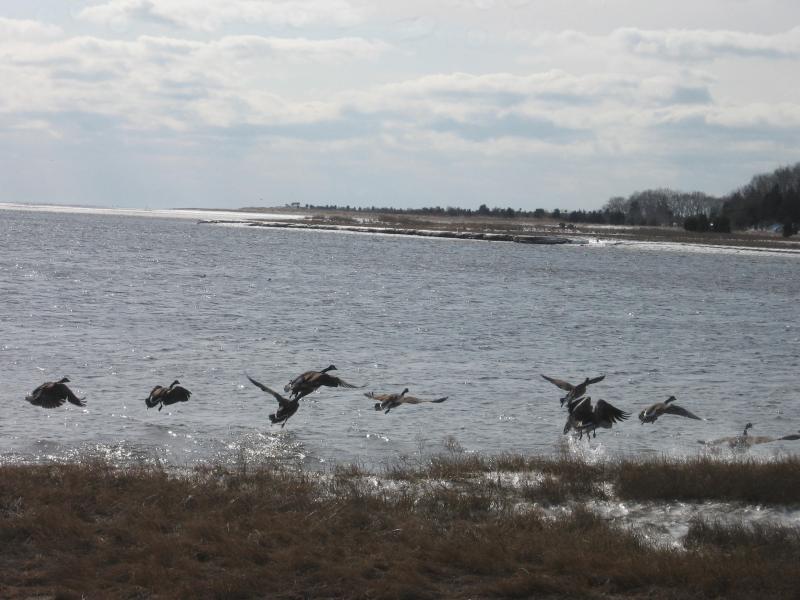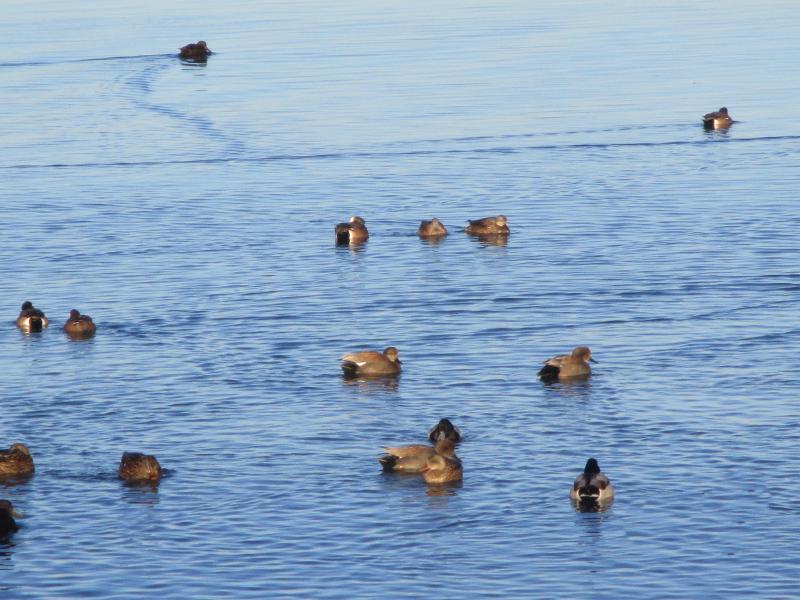Lloyd Center for the Environment’s Winter Waterfowl Count Results
Waterfowl Numbers Decline for January Count, but Canada Geese Numbers Surge!
The completion of the “late meteorological winter” portion of the Lloyd Center for the Environment's Winter Waterfowl Count on January 27, 2019, marks the completion of the 32nd annual survey of waterfowl in our region’s estuaries and coastal ponds from Dartmouth, Massachusetts to Tiverton, Rhode Island, designed to detect trends in migratory waterfowl abundance and habitat use at these systems.
Although both January surveys had optimal low tides, temperature and ice coverage trends were contrasting. Last year’s January count occurred on a balmy, rainy day compared to seasonably cold temperatures for this count, which resulted in “moderate” ice coverage. In fact, colder temperature trends resulted in increased ice coverage in both months of the 18/19 count, including the less common situation where some sites had higher coverage in December, the “early meteorological winter” count when warmer conditions usually prevail. This increase in ice occurred after three consecutive years of low to zero coverage from mild trends, which had implications for abundance of certain species.
Canada Geese abundance may have been positively correlated with ice coverage because while a colder trend caused more inland areas to be frozen, enough open water existed in estuaries. While we can’t say with certainty where geese arrive from, the now immense wintering Canada Goose population has both migrants from the north and local birds that are resident all potentially competing for space in our region during winter.
Total waterfowl for this survey (5,763) were very similar to, but slightly higher than the count conducted last January (5,536), largely due to an increase for Canada Geese by 1,419 birds. This doesn’t include large flocks roaming grassy fields in estuarine buffer areas due to absence of snow cover and availability of upland forage. This was the most Canada Geese counted in January in seven years. Since 03/04 when the last December postponement occurred, this was the highest waterfowl total (14,257) between the two months, due largely to the highest Canada Goose total (5,931) since that season, and the last time a particularly large decline from December numbers occurred.
Most of the geese (780!) were at Round Pond where they often gather in January, making this the site other than the Westport River with highest waterfowl abundance. Round Pond ice coverage was 70% compared to no ice last January there, which supports the assertion that more ice means more geese (keeping in mind geese also rest on ice). The Slocums River had the next highest abundance with relatively high counts for American Black Duck, Bufflehead, Mallard, and Common Goldeneye.
Duck abundance declined overall, however, especially divers, as is expected with higher ice coverage when birds may relocate to Buzzards Bay. The largest decline occurred for Bufflehead, with Red-breasted Merganser and Common Goldeneye also decreasing. For dabblers, although American Black Ducks declined only slightly, Northern Pintail, Gadwall, and American Wigeon, three relatively common species, declined considerably. Mallards had the largest increase for ducks, with both Greater Scaup and Hooded Merganser also increasing, but negligibly. Mute Swan experienced the second largest decline perhaps due also to the increase in ice which may deter them more than Canada Geese.
Within the large flock of Canada Geese at Round Pond were two “Cackling Geese”, the first ever record of the species on the count. Another rarity was a Northern Shoveler, seen at Long Pond.
So as another winter waterfowl survey draws to a close, it’s worth noting that waterfowl are both a critical component of biodiversity here during winter and throughout the breeding range which extends across the country and north of it, and are important wildlife for outdoor recreation as game birds and more passive pursuits, including birdwatching. Like all other creatures, waterfowl are also a critical part of the aquatic food web in this coastal zone which we share with nature.
This information provides a snapshot of species population trends, and importance of each habitat surveyed here to waterfowl overall, which can be used for management decisions affecting this natural resource down the road.
















